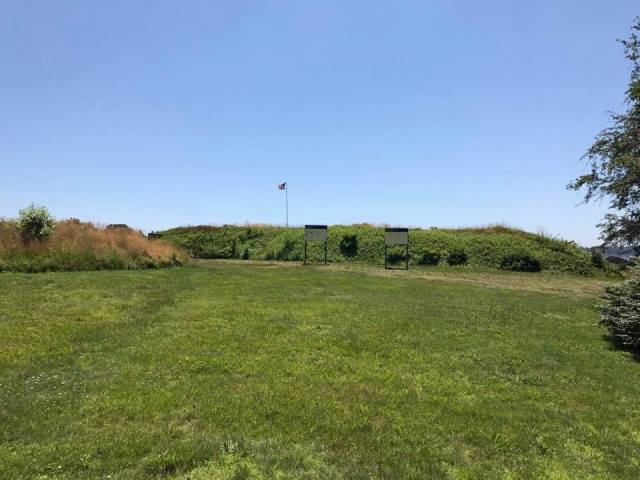For Part One, click here.
Lt. Col. Edmund Eyre’s battalion of 800 Regulars and Loyalists landed on the east bank of the Thames River, facing tangled woodlands and swamps. The New Jersey Loyalists, in fact, had so much difficulty moving the artillery that they did not participate in the assault on Fort Griswold.

Eyre sent a Captain Beckwith to the fort under a flag of truce to demand its surrender. Ledyard called a council of war and consulted with his officers. The Americans believed that a large force of militiamen would answer the call, and that this augmented force could defend the fort. Ledyard responded by sending an American flag to meet the British flag bearer. The American told Beckwith, “Colonel Ledyard will maintain the fort to its last extremity.” Displeased by the response, Eyre sent a second flag, threatening no quarter if the militia did not surrender. Ledyard gave the same response even though some of the Americans suggested that they should leave the fort and fight outside instead.
Arnold ordered Eyre to assault the fort, assuming that it would be taken easily. Once he reached a hill that allowed him to see the entire fort, Arnold realized that the stout fort would not fall easily. Arnold tried to recall Eyre, but it was too late. The British assault was about to begin in earnest.
Eyre split his force. Some moved to the southern side of the fort while others went around the east side to the northern face. A diversionary force feinted toward the western side. Naval captain Elias Halsey, an experienced artillerist, manned the main cannon on the eastern face of the front as Eyre’s troops approached Ledyard ordered his men to hold their fire until the first British detachment arrived at a point that gave his men the best opportunity to kill as many as possible. As the British moved to assault the fort, Halsey pulled the lanyard on his 18-pounder loaded with grapeshot. Twenty British solders fell to the ground, either dead or suffering from ghastly wounds from being torn apart by the grapeshot. Halsey’s well-aimed shot tore a gaping hole in the British line, but the well-disciplined Regulars closed ranks and filled that gap, continuing their advance.
Sgt. Stephen Hempstead of Ledyard’s command recounted, “When the answer to their demand had been returned … the enemy were soon in motion, and marched with great rapidity, in a solid column … they rushed furiously and simultaneously to the assault of the southwest bastion and the opposite sides.”
The large force of British soldiers moved on the southwest bastion under heavy fire from the fort’s defenders. The British officers goaded their men on toward the ramparts of the fort, even though their men were suffering heavily at the hands of the defenders. Colonel Eyre fell mortally wounded, and was carried from the field.

Maj. William Montgomery of the 40th Regiment of Foot was now the senior British officer. He led his men forward in solid column formation, and advanced on the east side of the fort. Montgomery ordered an attack on the eastern redoubt. Ledyard’s Nutmeg State men stoutly resisted, inflicting heavy losses on the British attackers. The Regulars attempted to scale the 12-foot high ramparts, but were cut down. As the men of the 40th Regiment poured over the top of the walls, defender Jordan Freeman, an African-American free man formerly owned by Colonel Ledyard, killed Montgomery with a long pike. The enraged Regulars then killed Freeman to avenge the death of their commander.
The concentrated fire of the British Regulars cut the fort’s main flag from its stand, which the British soldiers construed as the flag being struck in surrendering the fort. Thinking they had won the day, the rushed the main gate of the fort, only to receive a thunderous volley of shot and shell. The enraged Regulars tried to open the fort’s main gates to allow the rest of their comrades to enter, but a sheet of musket fire cut many of them down—supposedly, the first man to try to open the gate was killed instantly by a musket ball to the brain. Some of the British troops forced the gate open, and the Regulars poured into the fort.
Despite losing their two highest-ranking officers in the assault on the fort, the British carried the day. However, their successful assault now set the stage for the tragedy that followed.

